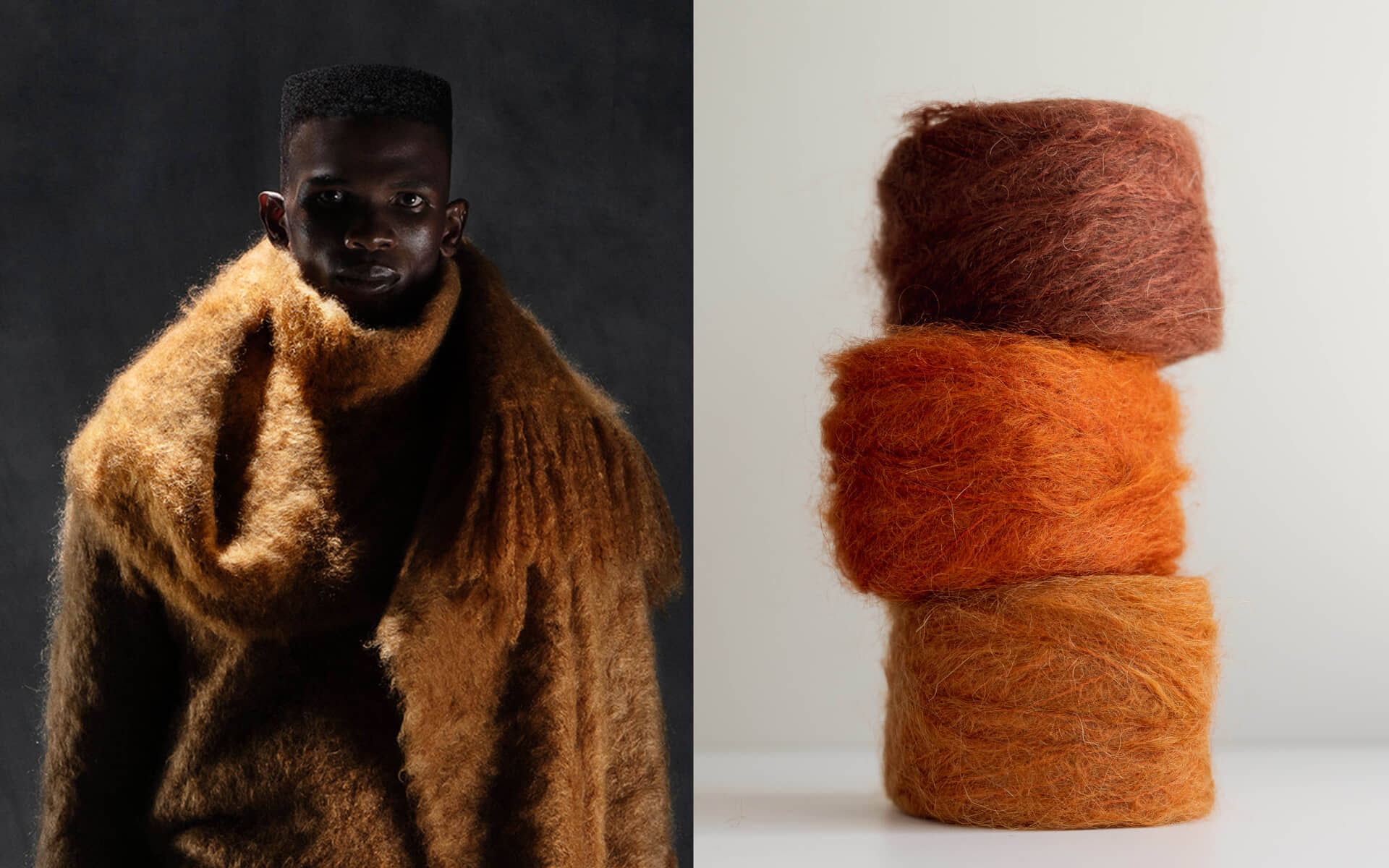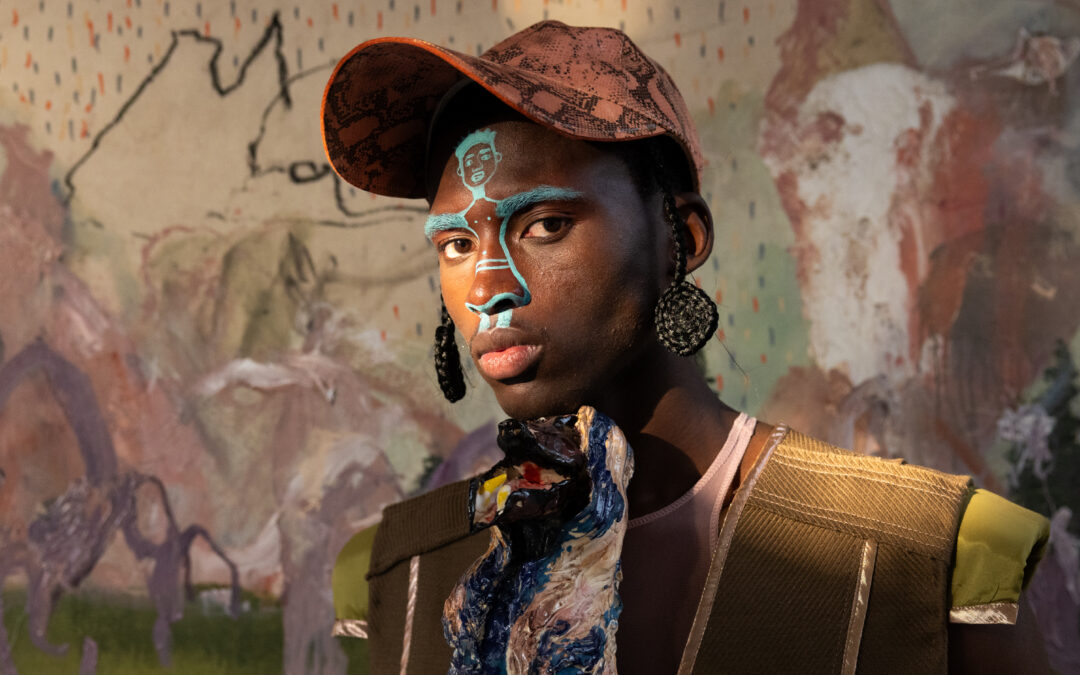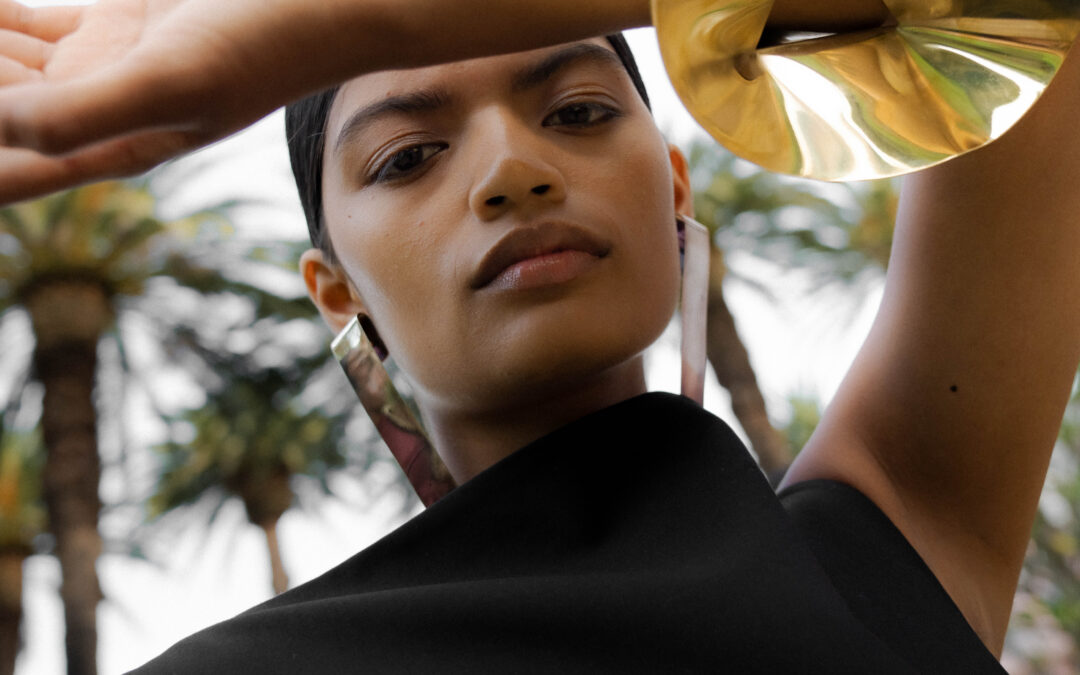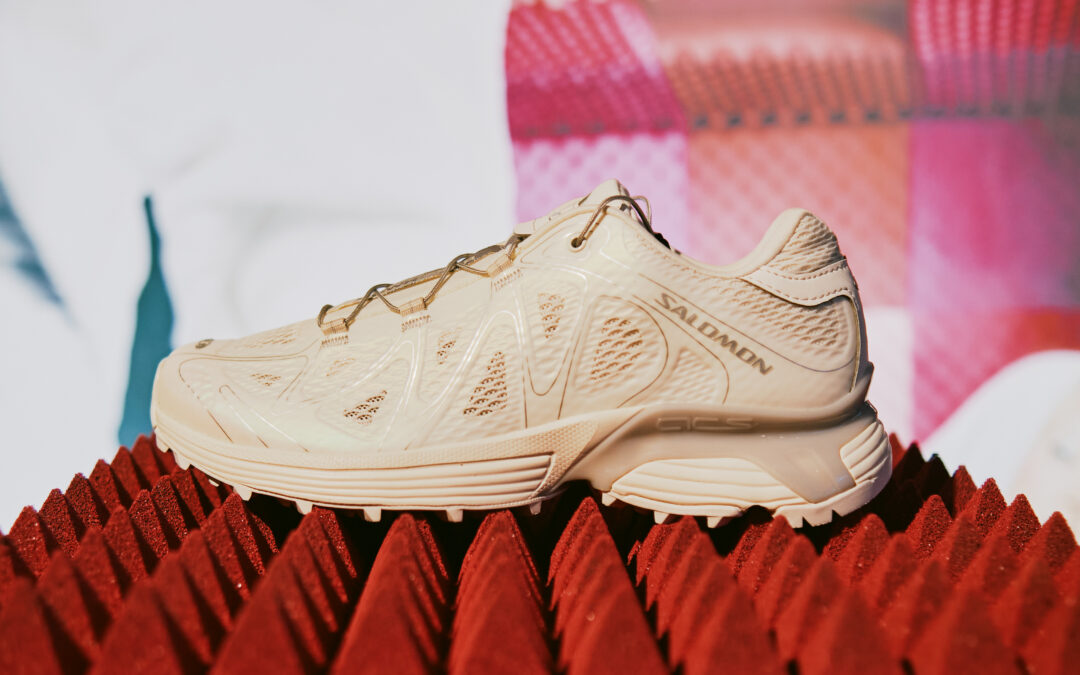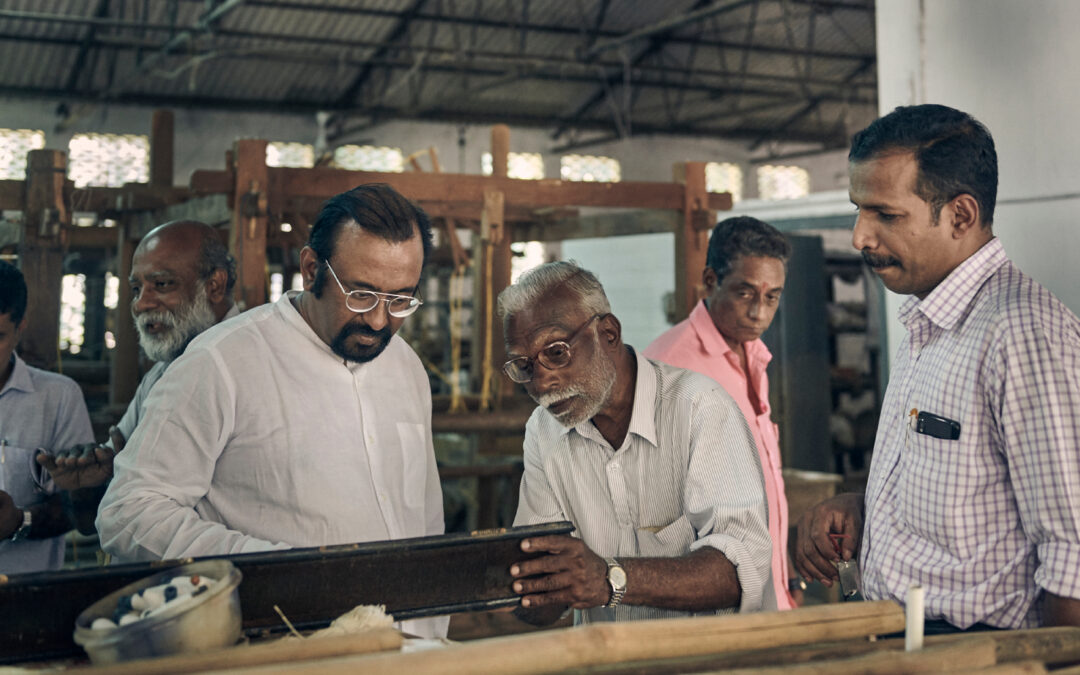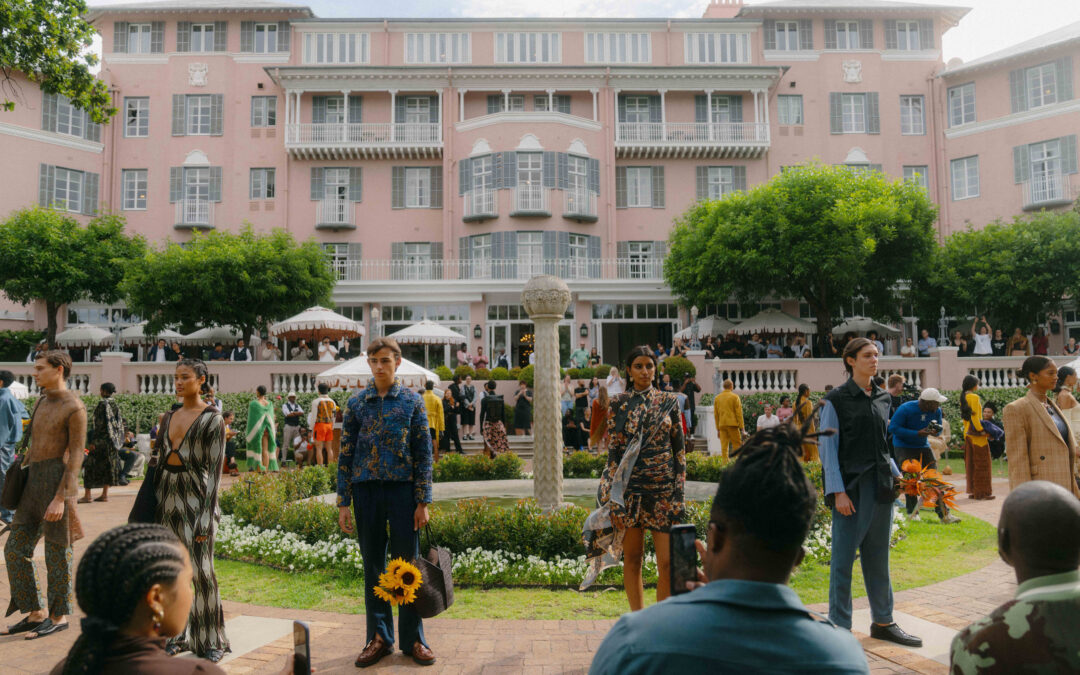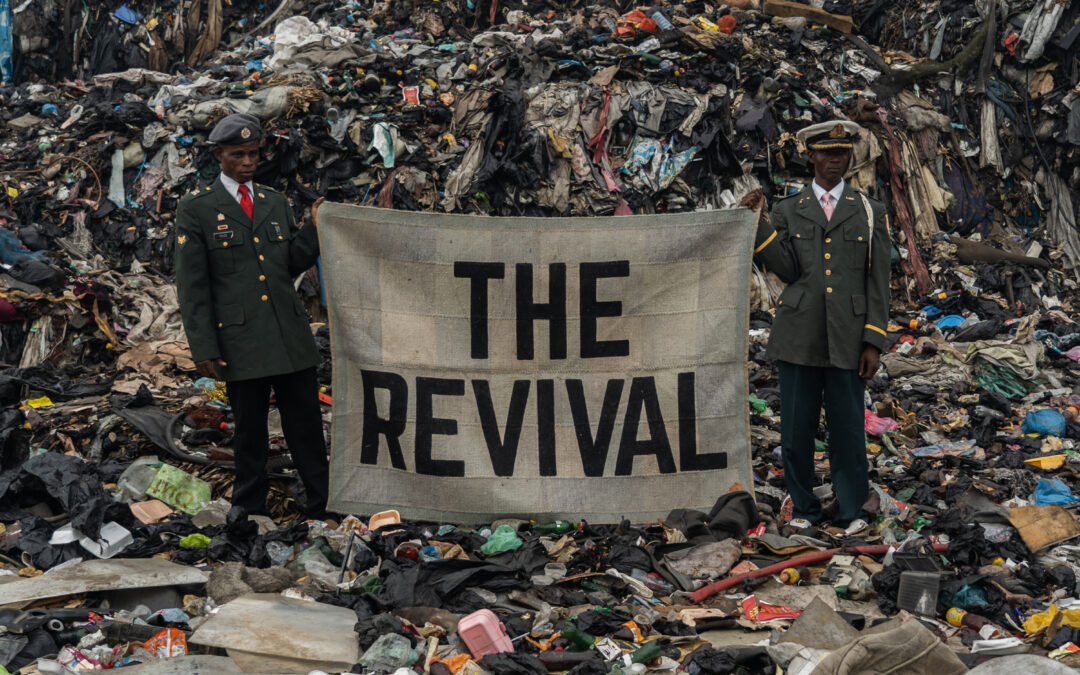Mohair carries with it the rhythm of the Karoo. The story goes that in 1838, the Sultan of Turkey gifted 12 infertile Angora rams and one ewe to South Africa; unbeknown to everyone, the ewe aboard the ship was pregnant and thus the first lineage of Angora goats were born in South Africa. Today, amidst the erosion of our textile industry due to rapid globalisation and market competition, the shorn coats of Angora goats and its resulting lustrous mohair wool remains one of our strongest textile stories. This month’s chapter of Interlude is a glance at this luscious fibre, and some of the key figures associated with celebrating its use today.
This topic is broad and as my disclaimer for Interlude perennially remains; this Chapter is by no means exhaustive; may it simply spark your appreciation for an inimitable yarn adorning South African textile legacy.
Mohair is rooted in a landscape that teaches stillness, patience, and endurance, across large swathes of the arid landscapes of the Karoo. Sheared from the coats of Angora goats, mohair is one of our most extraordinary exports: the fibre is light yet strong, luminous yet grounded. Its journey from the arid plains of the Eastern and Western Cape to the ateliers of Paris, London, and Tokyo traces a lineage of labour and land, colonisation and liberation.
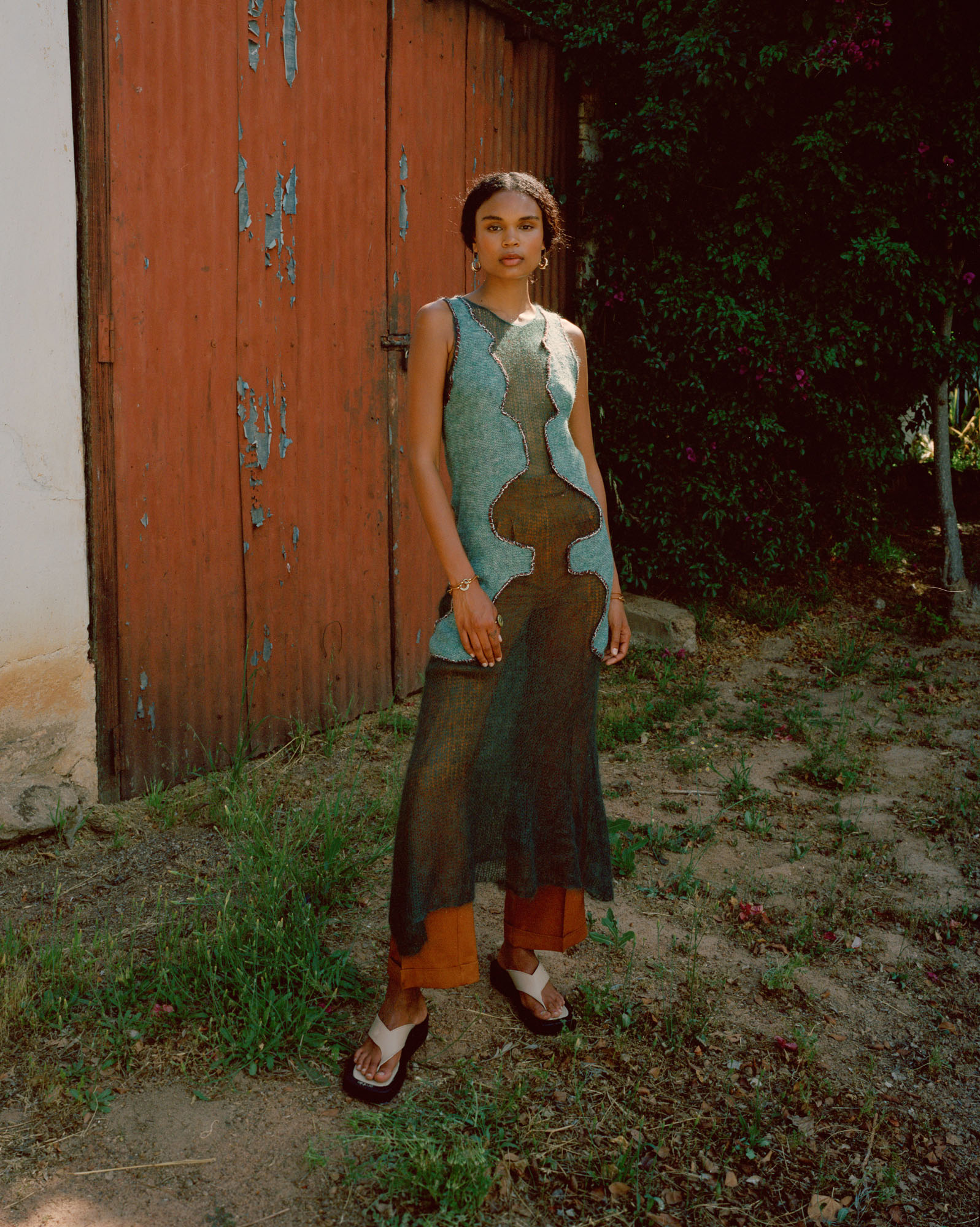
Lukhanyo Mdingi’s Bridges Collection, photographed by Johno Mellish, via lukhanyomdingi.com Archives

Angora Goats, courtesy of Mohair South Africa’s Press Kit via mohair.co.za
South Africa is the world’s leading producer of mohair, responsible for approximately 51% of global supply. This is an incredible feat, and a prized jewel in our textile, fashion and design spaces; and working with mohair for South African designers has become a kind of rite of passage. Most of our Angora goats are farmed in the Karoo, where the extreme climate—hot, dry summers and cold winters—combined with semi-desert vegetation, creates the ideal conditions for growing premium fleece. These goats have been selectively bred and genetically refined for generations in the pursuit of perfection, resulting in a fibre that is renowned for its quality and consistency.
Twice a year, Angora goats are sheared by hand—an art passed down across generations. From there, the mohair goes through a meticulous series of processes: shearing, classing, scouring, carding, combing, and spinning. Each stage requires knowledge and care. The result is a fibre that holds colour richly, resists creasing, and maintains its shape with graceful ease. Though soft and delicate to the touch, mohair holds that stunning ability intrinsic to most animal-based fibres of resilience.
The story of mohair is a narrative of intimacy—between farmers and their flocks, between makers and the potential of materiality. This intimacy is supported and protected by Mohair South Africa, the industry body that oversees quality and ethical standards from farm to fashion. Through their traceability programme, mohair threads can be linked to a specific farm; with their important advocacy ensuring transparency, protecting animal welfare, and preserving rural livelihoods.
Beyond standards and quality, Mohair South Africa is also investing in the future of the industry. One of their key missions is to support emerging Black South African mohair farmers, partnering with those who meet the criteria and helping them establish themselves within the wider mohair sector. This initiative is essential to creating a more inclusive and sustainable industry that reflects our broader social and political transformation as a country, and as the organisation itself explains, “we unite a vibrant and passionate network of stakeholders across the farm-to-fashion supply chain. Our unwavering commitment to sustainable farming practices, research and development, and education and training for farmers positions us as a key player in the global mohair market.”
As I’ve noted, and in a country where textile manufacturing has been heavily eroded, mohair remains a living exception. It offers continuity where other fibres have faded. Designers drawn to its tactility are working with a material that offers both creative potential and ethical weight, and through local production, mohair sustains farms, millworkers, weavers, and tailors. It touches many hands before it becomes a finished garment.
Among those who have worked most thoughtfully with mohair is Lukhanyo Mdingi, whose collections trace the intersection of heritage, process, and emotion. In his work, mohair appeared in finely finished coats, softly latticed dresses, fluid silhouettes, and tactile layers—developed in collaboration with rural artisans and spinners. Since his first collection over a decade ago, Lukhanyo’s commitment to artisanship in both process and creativity saw him visiting farms, listening to the stories embedded in every skein, and always allowing the fibre and the hands that make to guide the design process. As we know, Lukhanyo’s work has appeared internationally from Milan to Paris, and his LVMH win in 2021 brought intense visibility to South African mohair, among many other techniques and textile innovations, to the world stage.
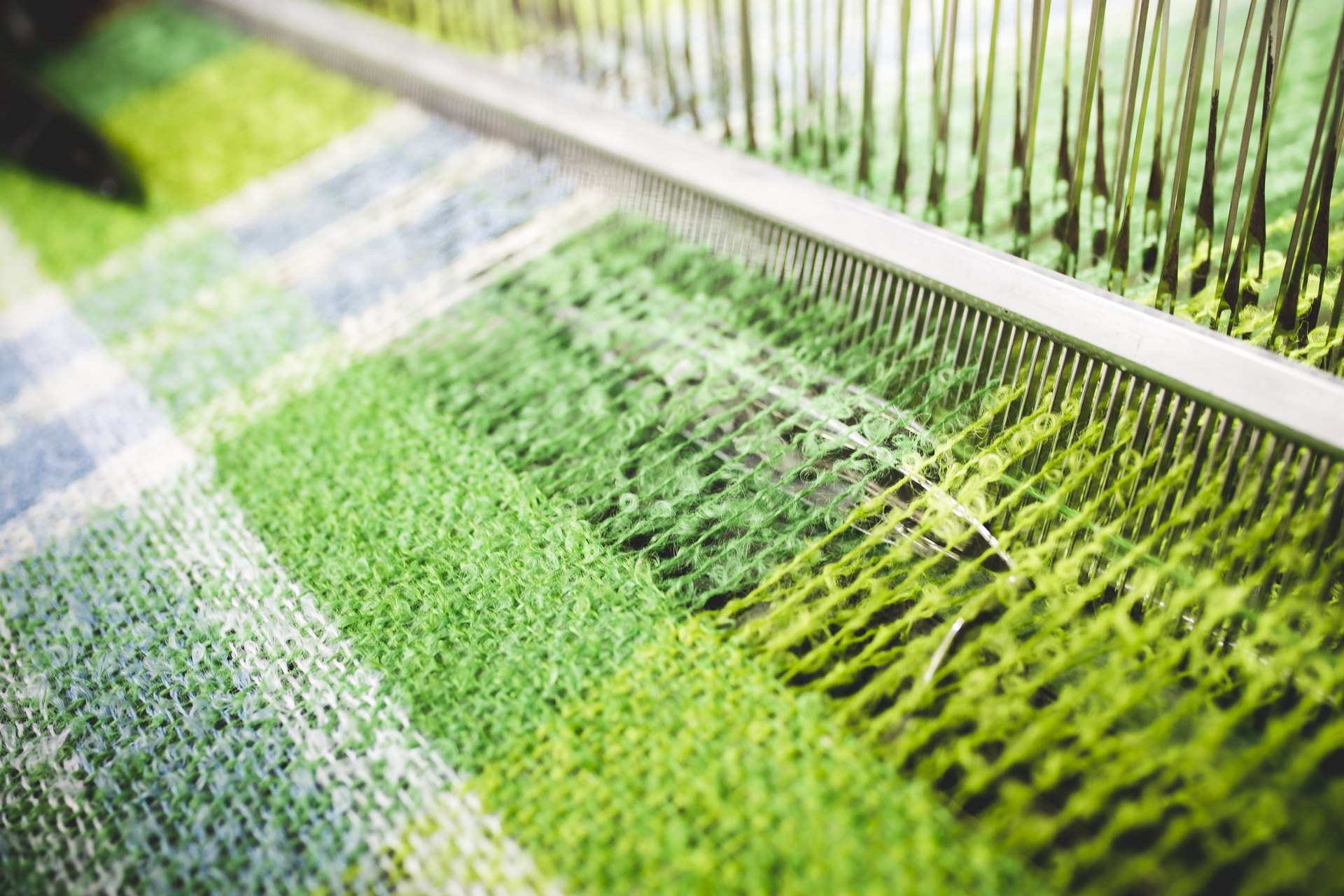
Mohair Weaving, courtesy of Mohair South Africa’s Press Kit via mohair.co.za
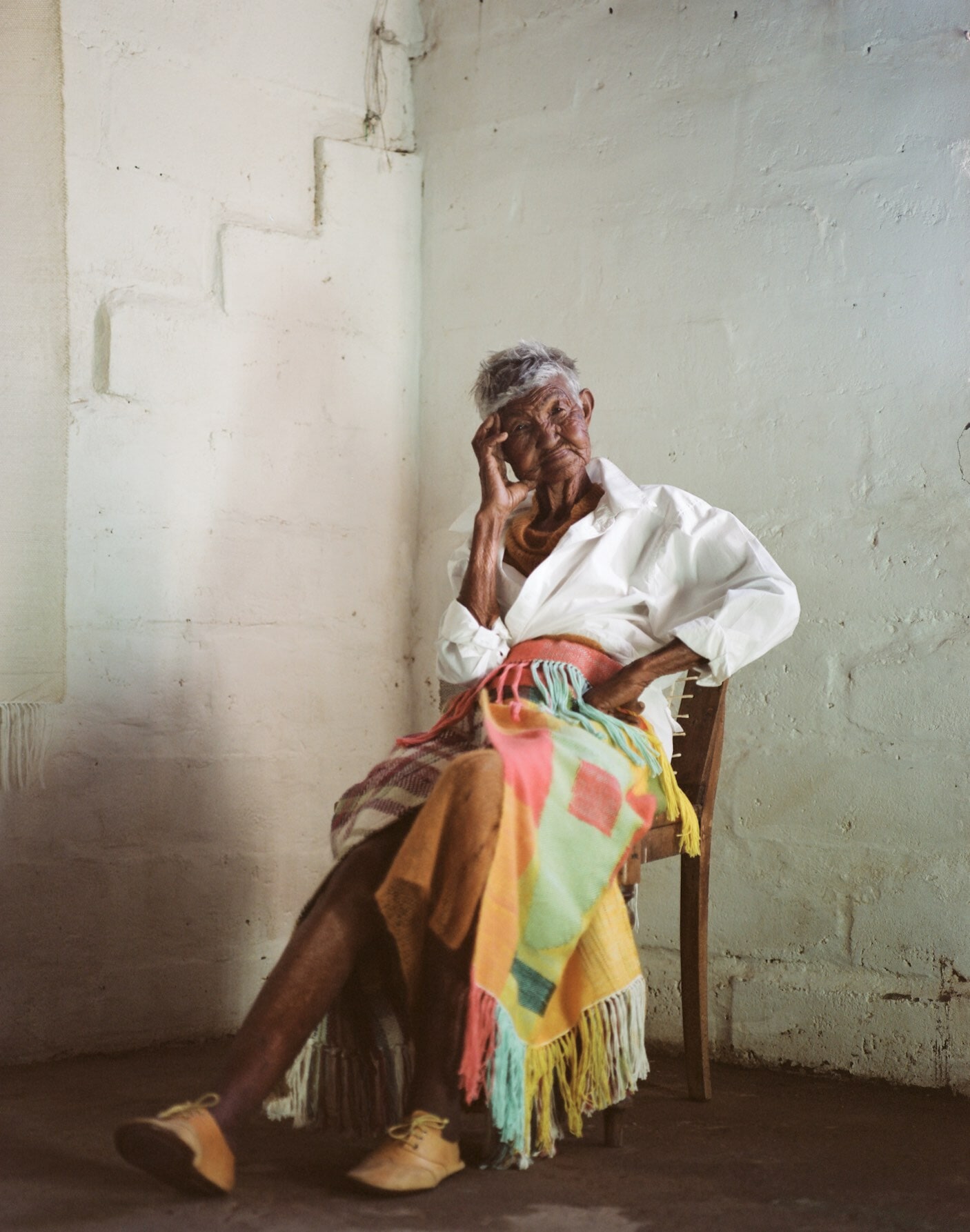
Fransiena Moos for Frances VH Mohair, titled ‘Voorskoot Vygie’, photographed by Ané Strydom, via francesvh.com
Frances VH, the label of designer Frances van Hasselt, offers another interpretation altogether. Raised on a mohair farm, Frances understands the fibre intimately, both technically and emotionally. Made together with women artisans in the Eastern Cape, Frances’ designs play with sculptural silhouettes, negative space, and experimental weaves, allowing mohair to take on unexpected textures and tones. Always centering the people of the Karoo to whom Frances owes her lineage, she continues to showcase the incredible diversity of mohair in innumerable ways. I am currently head over heels for her recently launched kidswear collaboration with Big Little Store; kaleidoscopic mohair jackets for little ones, have you ever?
Cape Town-based Mors Design approaches mohair from the vantage point of functional comfort. Their collections span fashion and interior, from oversized scarves and knit jerseys, to these incredible mohair bonnets. Each piece invites touch, and mohair as its central and only textile retains its sense of place, anchoring the studio’s work in a local kind of luxury.
In the hands of these designers, mohair hums with continuity, charting a future legacy of softness, slowness and respect amidst the beckoning chaos of fast-fashion and hyper-consumptive fashion manufacturing. Mohair remains still and reminds us to be steady in our approach; treasuring what we own with authorship and care.
For Fall 2013, Stella McCartney collaborated with mohair and textile manipulators to create the ‘Bryce’ Ivory Mohair Faux Fur Jacket—a cruelty-free response to the plush silhouette of traditional fur. Similarly innovative, Issey Miyake’s 2025 ‘EASE AND EASED’ collection drew inspiration from the shape of a kamigoromo (a paper kimono), using hemp washi paper for the base, with hemp as the warp and a mohair-wool blend for the weft—merging ancient form with future-facing fibre design.
These designers have been drawn to the fibre’s softness and sheen, and to the traceability and ethics behind it. One of the most striking global moments for South African mohair came in Dior’s Fall 2022 menswear collection, where mohair appeared in tailored outerwear and oversized knits. Kim Jones, Dior’s creative director at the time, would go on to celebrate the Karoo even more broadly through a collaboration with South African ceramicist Hylton Nel; the Dior Men’s Spring/Summer 2025 collection, unveiled in June 2024. Drawing inspiration from Nel’s whimsical ceramic works, the collection featured motifs and elements that celebrated the Karoo region’s artistry.
These applications affirm mohair’s range, and point to South African mohair’s integrity beginning on the land. Mohair farming depends on regenerative agricultural cycles—a necessity in a region in which drought is a constant concern. Many South African farmers are adopting practices that preserve soil health, conserve water, and rotate pastures, ensuring that the goats remain healthy and the ecosystem resilient. Well-cared-for goats live longer and produce finer fleece. The fibre itself holds the imprint of this attention—its sheen and strength a reflection of the wellbeing of both the animals and the environment. We have much to learn from the deep interconnectedness of fibres: how they are grown and cared for, and how they eventually arrive in the garments we wear or the textiles we wrap ourselves in.
As autumn settles across the southern hemisphere, mohair is returning to our wardrobes and interiors. It arrives as a textured presence—rich in memory and gentle in its assertion. In a season that invites layering, mohair offers anchoring and a resistance to excess, that we as South Africans can be deeply proud of and root for.
To me, mohair embodies our future—a fashion future that is rooted in care and aligned with nature. As the fashion world reimagines its systems, mohair stands ready. It holds a memory of land and our history, and championing mohair offers a case study about where South African fashion can go when we are guided by clarity of vision and a willingness to listen.
Written by Holly Bell Beaton
For more news, visit the Connect Everything Collective homepage www.ceconline.co.za

